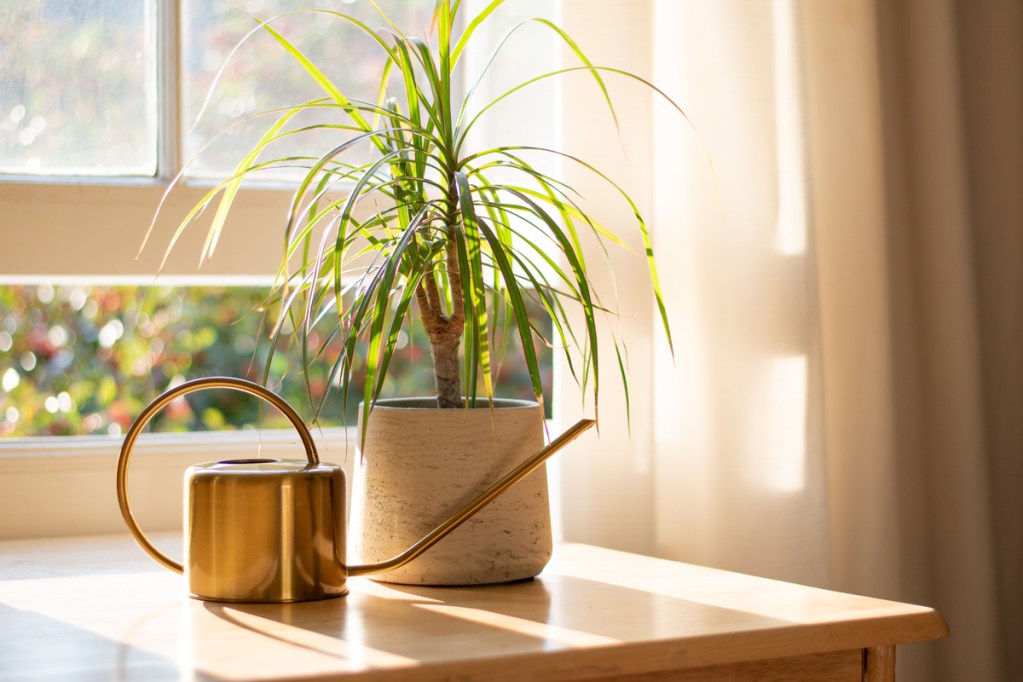
Chances are you’ve encountered the dracaena plant at your local nursery. You’ve also probably noticed arching dracaenas feature some of the lushest growth patterns and variegation in the plant world. Whether they’re single-stemmed shrubs or trees, these plants make exquisite additions to any home or office. Plus, they’re pretty low-maintenance plants — all they need is indirect light and non-fluoridated water to thrive. Below, we’ve rounded up our favorite types of dracaena plants. Let’s take a look.
1. Gold dust dracaena (Dracaena surculosa)
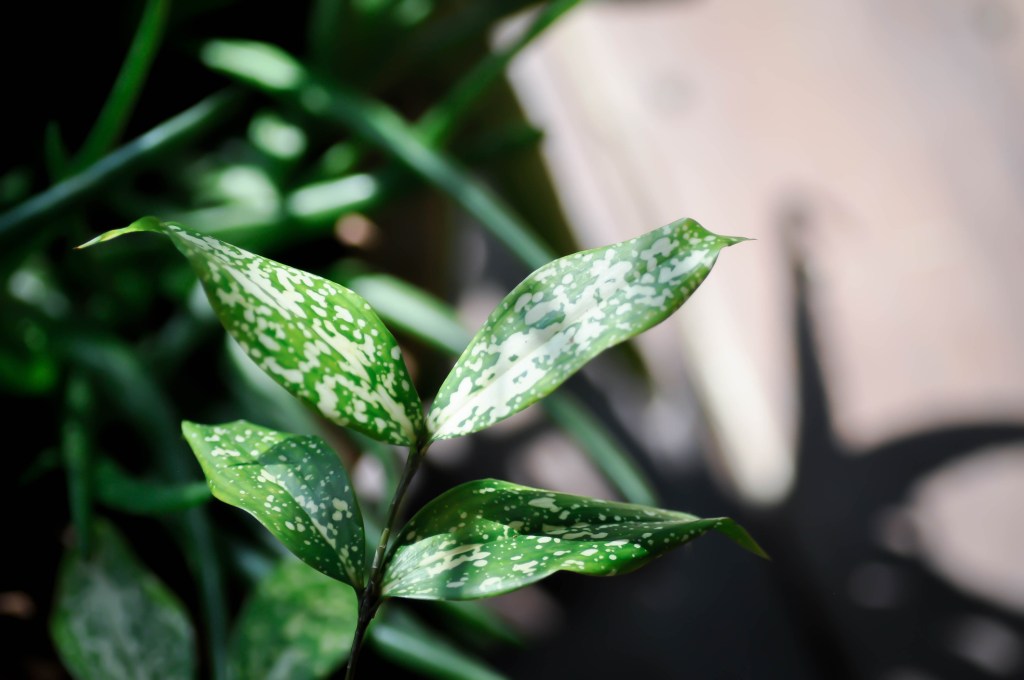
The beautiful gold dust dracaena features arching branches that push out lanced-shaped leaves with a dark green color and cream speckles. It grows relatively slowly and can handle neglect — that is, low-light conditions and periods of drought. That said, you’ll be rewarded with more variegation with bright indirect light.
2. Cornstalk plant (Dracaena deremensis)
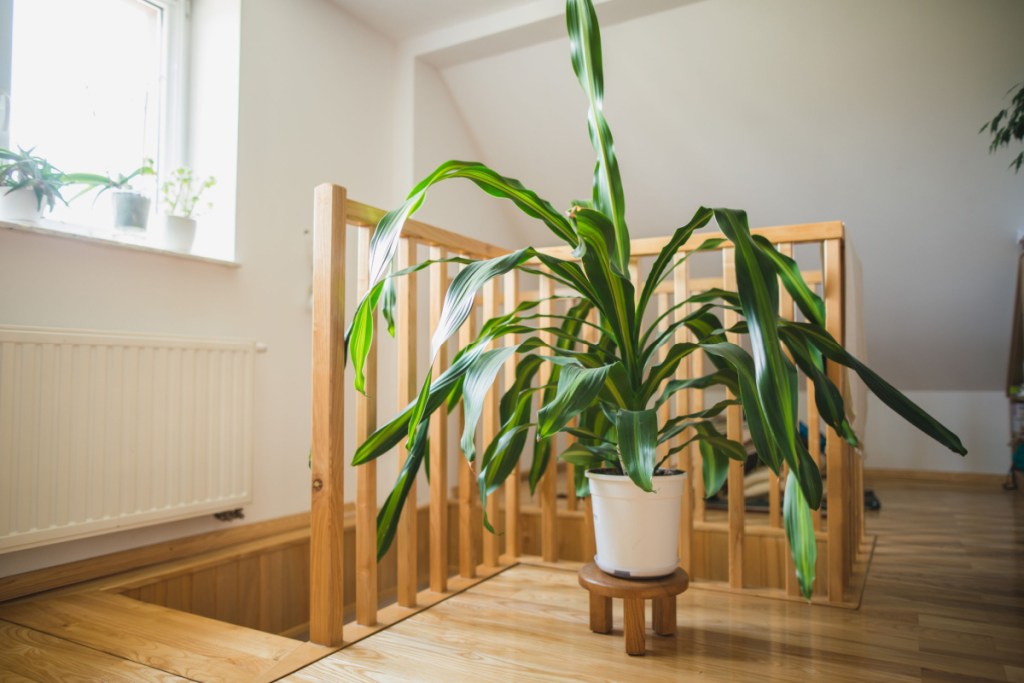
Dracaena deremensis is colloquially known as the cornstalk plant because its large green arching leaves, of course, resemble cornstalks. Its thick arching leaves can grow up to 18 inches long, and its woody central stem makes it an attractive ornamental houseplant. Give it filtered water whenever the soil feels dry to the touch — ignoring your plant can lead to browning and wilted leaves that might not recover.
3. Madagascar dragon tree (Dracaena marginata)
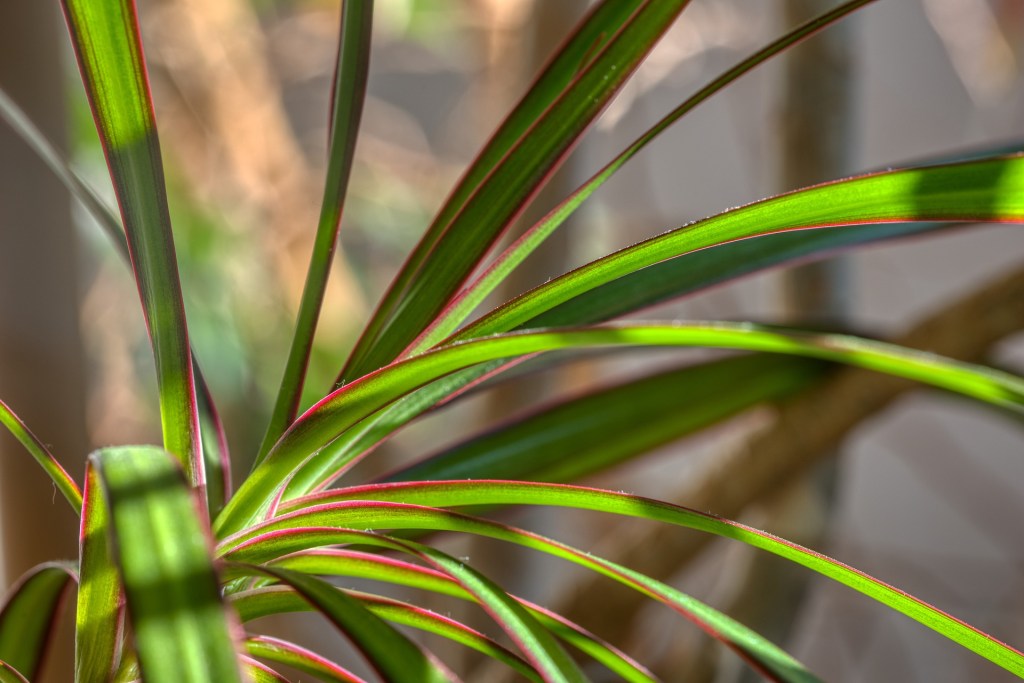
The Dracaena marginata features a central stem with branches that shoot out thin, arching leaves. It’s one of the easiest dracaenas to care for, and it can easily reach 10 feet tall with plenty of indirect light. The tricolor variety shows off leaves with colorful pink, green, and white stripes. Don’t worry too much if lower leaves fall over time, as this creates the alluring triangular notches that the plant is known for.
4. Song of India (Dracaena reflexa)
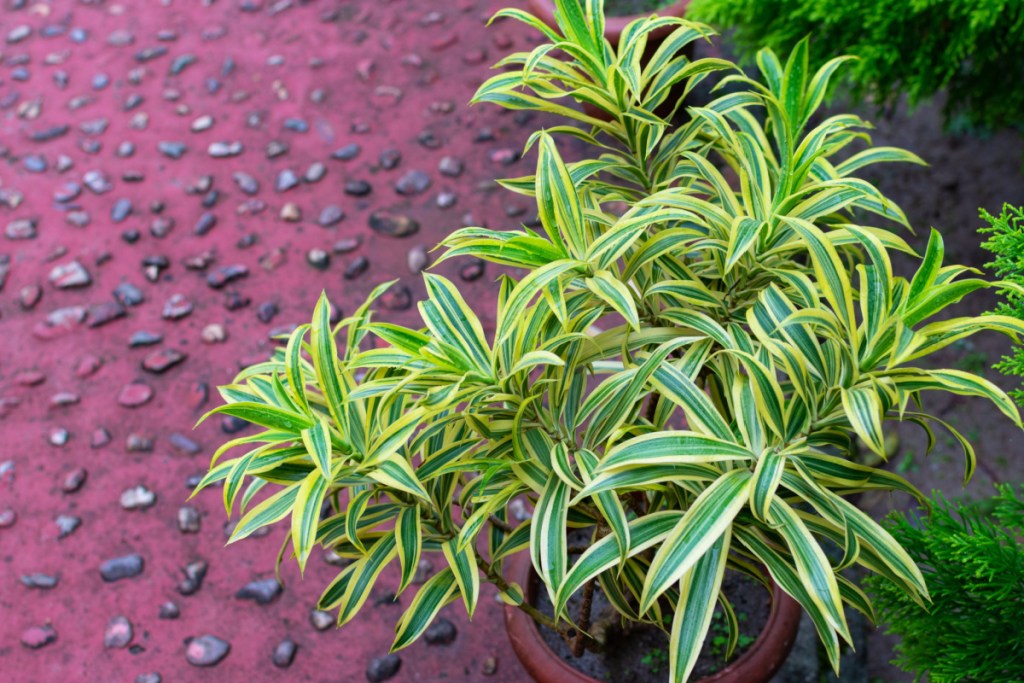
The song of India features thick, woody stems that put out whorls of thick, lance-shaped leaves with green or variegated color. The Dracaena reflexa can grow up to 20 feet tall outdoors, but it’s usually much more compact as a houseplant. You won’t need to water it often — just give it a deep drink of water when the soil dries out, as overwatering may cause leaves to drop. If you notice browning tips, you may be under-watering or giving it water that’s too hard, so give it a good drink of distilled water to keep it happy.
5. Lucky bamboo (Dracaena sanderiana)

A stunning ornamental plant with distinct stem markings and widely spaced leaves, the lucky bamboo isn’t a true bamboo, but it can grow in water. It does best in non-chlorinated water or moist soil. If you grow it with the former technique, change the water every week and give your plant a diluted liquid fertilizer throughout spring and summer. You may find it arranged as swirls or braids in offices or workspaces, as it’s excellent for fostering good feng shui.
6. Snake plant (Dracaena trifasciata)
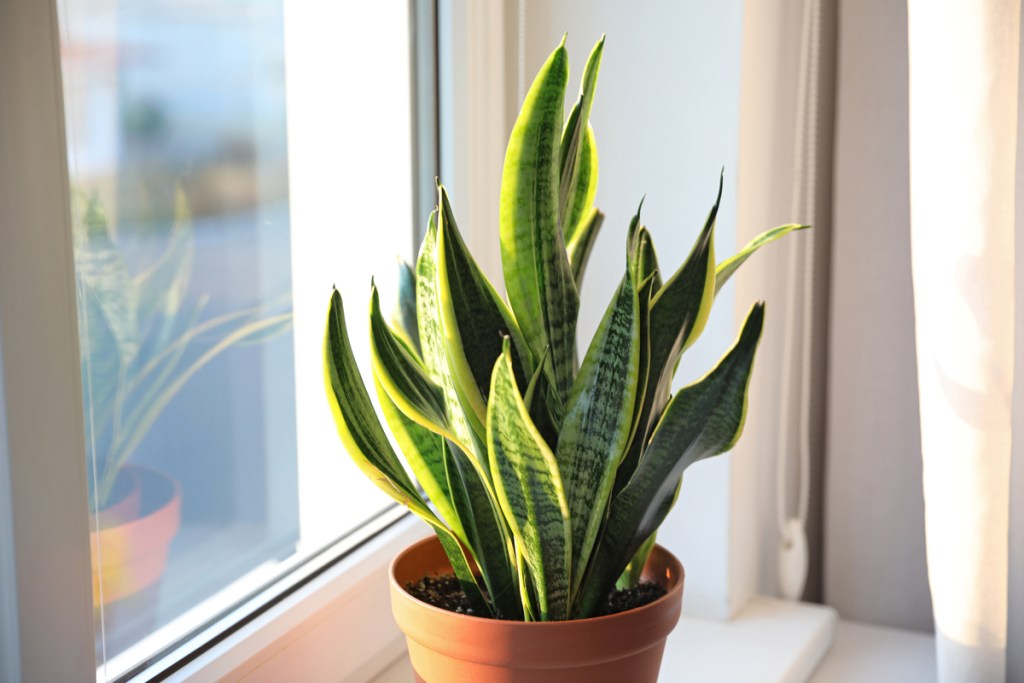
Yes, a snake plant is now technically classified as a dracaena plant. As their name implies, snake plants typically have tall, sword-like leaves that look like slithering snakes. Even if you previously thought of snake plants and dracaenas as separate entities, their care requirements are similar — both will survive infrequent watering and low light levels. However, because snake plant leaves are more succulent than the ones on most dracaenas, you can get away with watering them less. They also tend not to be as picky as other dracaenas with tap water, so you won’t need to filter your water before pouring it into the soil.
7. Striped dracaena (Dracaena fragrans “Warneckii”)
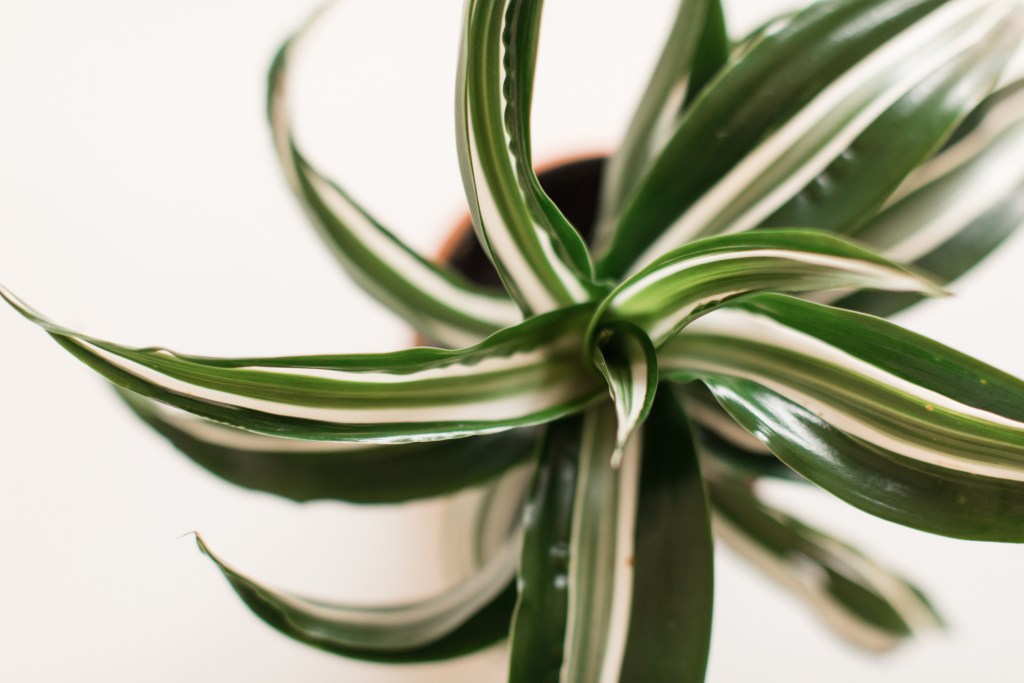
The striped dracaena is one of the most common dracaena types found at garden centers, but that doesn’t make it unworthy of your attention. It features arching dark green leaves with sage and white stripes running down the center of each blade. It’s a great plant for dracaena beginners, as it’s accessible and easy to care for. To keep the leaves pristine and free of brown tips, water when the top inch of your soil dries out, and be sure to use filtered water. This variety tends to stay compact, although it can shoot up with extra fertilizer during the growing season.
8. Dracaena tree (Dracaena arborea)
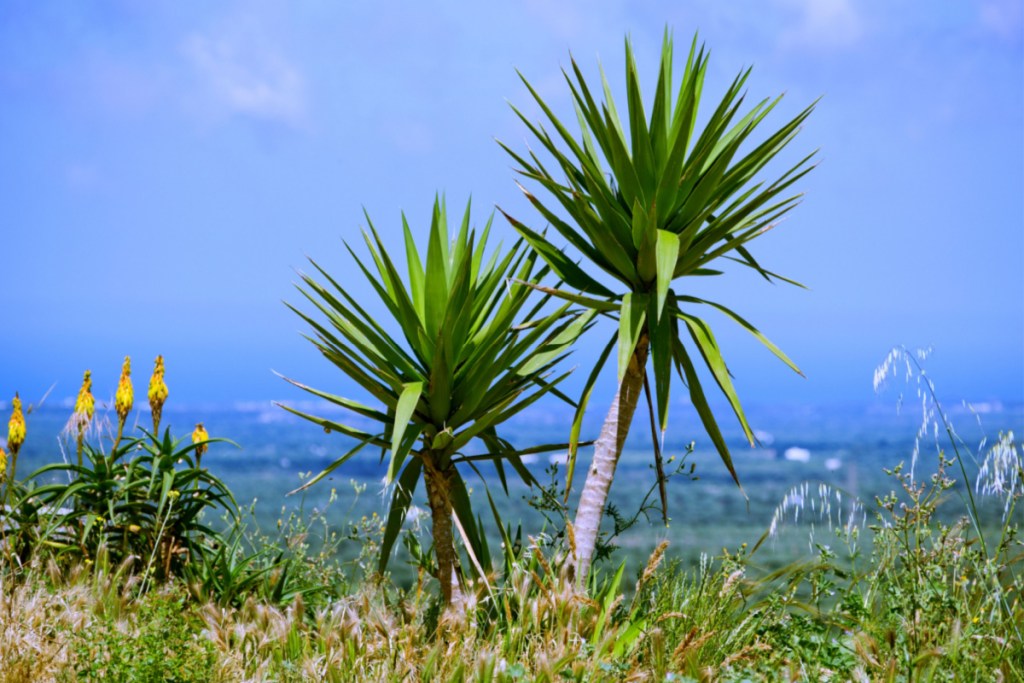
This dracaena, known as the dracaena tree, will remind you of a smaller palm tree, and it adds a tropical feel to your indoor space. It has long leaves shaped like swords, a short stem, and coral roots. This low-maintenance tree requires well-draining soil and likes bright, indirect sunlight. The dracaena tree can grow up to 8 feet tall, especially if you feed it a balanced, water-soluble fertilizer monthly during the growing season. You must water it every week or two, depending on your indoor environment. When you water it, water it thoroughly, allowing the excess to drain.
9. Limelight dracaena (Dracaena fragrans “limelight”)
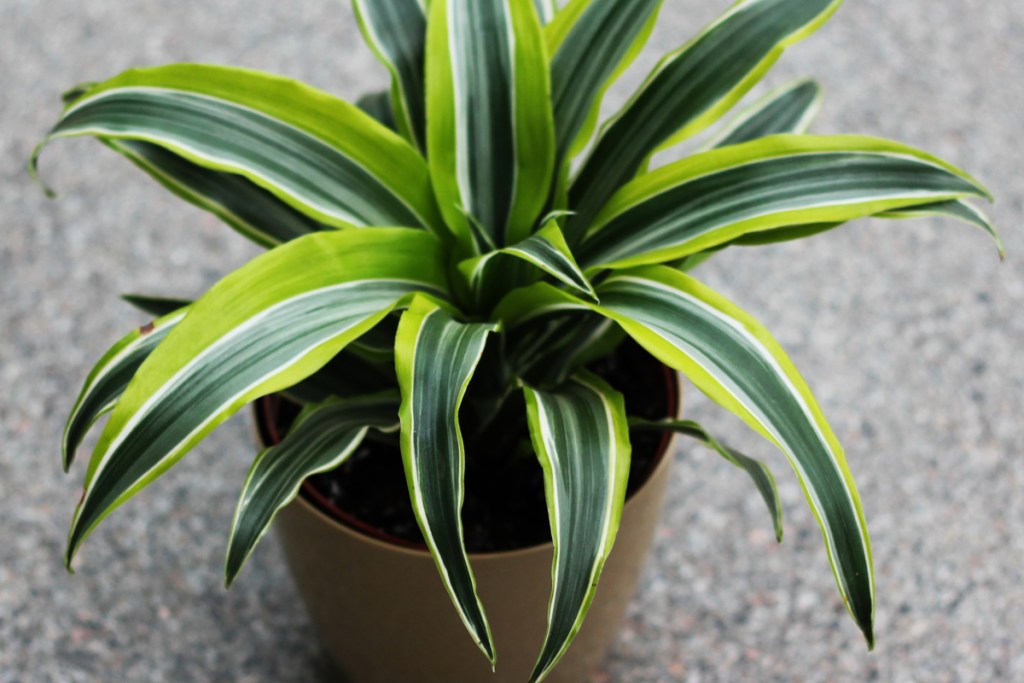
The Dracaena fragrans limelight has a similar structure and care routine as the Warneckii, but it features neon lime details. It’s great for adding a pop of color to your space, and it’ll complement other neon plants, such as the philodendron moonlight and the neon pothos. This plant grows slowly, but you can boost its growth with water-soluble fertilizer during the growing season.
10. Green Jewel dracaena (Dracaena fragrans “Green Jewel”)

If you’re partial to a clean, minimalist look, you can’t go wrong with a Green Jewel plant, which you can usually find in most nurseries. Similar to the Warneckii and limelight with its glossy, arching leaves, this dracaena has a classic dark green color along with a compact shape — that said, there are versions of it that branch out and look great as statement floor plants. When it comes to care, you can leave it to dry out between waterings with little worry. While it is quite drought tolerant, you do want to use distilled water to keep its tips from turning brown.
With their beautiful colors and arching leaves, dracaenas can add personality to any home or office — without fuss or expensive price tags. Your options range from the elegant dragon tree to the sturdy lucky bamboo. Whichever dracaena you choose, you’ll have a stunning, low-maintenance pick to flaunt in your plant collection.



